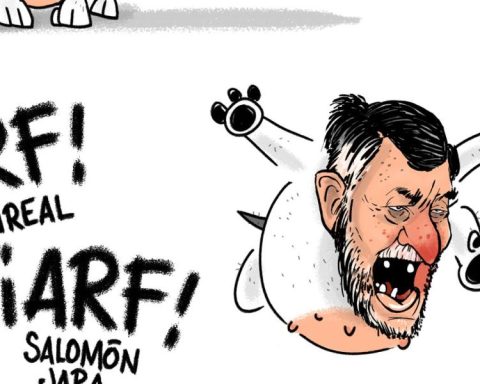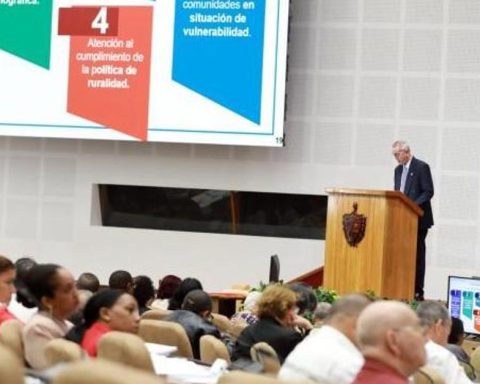You’ve probably seen ads promoting oil and gas companies. like solutions to climate change. pretend to be inspiring and hopefulwith scenes of a green and clean future.
But these glossy ads they’re not the only thing these companies are doing to protect their industry interests in the face of a rapidly heating world. Most also provides financial support to industry groups spending hundreds of millions of dollars on political activities often aimed at thwarting policy initiatives to curb climate change.
For example, The New York Times recently reported on the attempts by the US Propane Education and Research Council to thwart efforts to electrify homes and buildings in New York, in part by allocating nearly $900,000 to the New York Propane Gas Association, which flooded social media with misleading information about energy-efficient heat pumps.
The American Fuel and Petrochemical Manufacturers Association, which represents oil refineries and petrochemical companies, has spent millions in public relations campaigns, such as the one calling for rolling back federal fuel-efficiency standards.
These practices have been going on for decades, and evidence shows that industry groups have played key roles in blocking state and federal climate policies. This is important not only because of the enormous sums spent by these groups, but also because they often act as command center of campaigns to end pro-climate policies.
We study the political activities of industrial groups. in a recent research paperwe’ve dug through tax returns to follow the money trail of industry associations dedicated to climate change issues and track the billions they’ve spent to influence federal policy.
what we found
After NASA scientist James Hansen sound the alarm about climate change In 1988, three industry associations—the National Manufacturers Association, the Edison Electrical Institute, and the American Petroleum Institute—joined with a pair of electric utilities to form the Global Climate Coalition or GCC, for its English acronym.
The GCC consistently opposed any international regulation of greenhouse gas emissions and successfully prevented the United States from ratifying the Kyoto Protocola 1997 international agreement to reduce greenhouse gas emissions.
This was the first example of collaboration between industry associations to paralyze government action in terms of climate change. Similar efforts continue today.
How much do professional associations spend on political activities, such as public relations? As non-profit organizations under the Internal Revenue Code, trade associations have to report their income and expenses.
We found that industry associations historically opposed to climate policies they spent 2 billion dollars in the decade from 2008 to 2018 in political activities, such as advertising, lobbying and political contributions. Combined, they outnumbered pro-climate industry groups 27 to 1.
The oil and gas sector was the one who invested the most, with an expenditure of 1.3 billion dollars. Among the 89 industry associations we examined in nine different sectors of the US economy between 2008 and 2018, no other group of industry associations came close to this number.
Main expense: advertising and promotion
What surprised us the most when counting the data was how much professional associations spend on advertising and promotion. This includes everything from advertisements in the main media to promote the sector to the hiring of public relations firms to deal with specific issues in Congress.
For example, until they broke up last year, Edelman, the world’s largest public relations firm, received about 30 million dollars of American Fuel and Petrochemical Manufacturers to promote fossil fuels, journalists from the news site discovered Heated.
Our study found that industry associations dedicated to climate change issues spent a total of $2.2 billion on advertising and advocacy between 2008 and 2018, compared to $729 million on lobbying. as show 2022 datahis spending continues. Although not all of this money is going directly to climate policy, climate change is one of the main political issues for many industries in the energy sector.
Media buys are expensive, but these numbers also reflect the specific role industry associations play in protecting the reputations of the companies they represent.
One of the reasons that groups like the American Petroleum Institute have historically led negative public relations campaigns is so that their members, such as BP and Shell, are not splashed with the same brush as confirmed our interviews with people from the sector.
However, many companies are coming under pressure to leave industry associations that oppose climate policies. For example, the oil giant Total left API in 2021alleging disagreements on climatic positions.
Social media spending in the weeks leading up to the US mid-term elections and during the November 2022 UN Climate Conference provides another window into the operations of these groups.
A review A study by the group Climate Action Against Disinformation found that 87 groups linked to fossil fuels spent between $3 million and $4 million on more than 3,700 ads through Facebook’s parent company alone in the 12 weeks leading up to the conference and during the same.
Most of it came from a public relations group representing the American Petroleum Institute and focused largely on defending oil and natural gas and discussing energy security. America’s Plastic Makers spent about $1.1 million on climate-related advertising during the two-week UN conference.
Channeling money to think tanks and local groups
Industry associations also spent $394 million in grants to other organizations during the decade under review. For example, they gave money to think tank, universitiescharitable foundations and political organizations such as associations of mayors and governors.
While some of these grants may be philanthropic in nature, among the industry associations we spoke to, most have a political purpose in mind. Grants channeled to local community groups, for example, can help improve an industry’s reputation among key social groups and, as a result, its approval to operate.
What this means for climate policy
Fossil fuel companies, which registered record profits in 2022, they continue spending more in political activities than their professional associations.
But industry groups that have historically opposed climate policies also spend big, as our study shows. In the 10 years analyzed, they spent a whopping $2 billion, compared to $74.5 million for those who support measures to curb climate change, such as the solar and wind industries.
It is likely that this help explain why it took the United States Congress nearly 35 years, from when Hansen first warned House representatives about the dangers of climate change, to pass a major climate bill, the Inflation Reduction Act of 2022.
Christian DownieAssociate Professor, Australian National University and Robert BrulleProfessor of Sociology, Brown University
This article was originally published on The Conversation. read the original.















